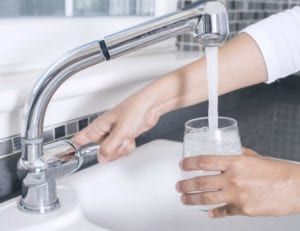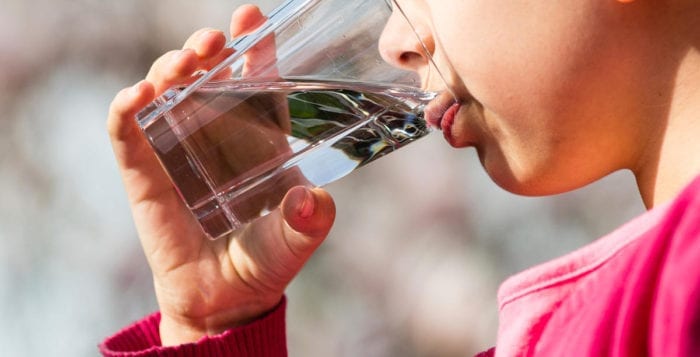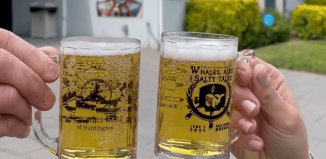Making Democracy Work: Education and advocacy on drinking water contaminants
By Stephanie Quarles
Many organizations, universities, scientists and government officials have studied and spoken out on Long Island’s water issues, with regard to our oceans, estuaries, rivers and our aquifers.
A recent conference in Riverhead on May 30, organized by the Environmental Advocates of New York (EANY), focused on the contamination of drinking water supplies in Suffolk County and aimed to educate and strengthen advocacy and partnerships on these issues. At the conference the following bills that were pending in the NYS Legislature and supported by EANY were highlighted. Since the conference, the Senate and Assembly have debated and passed all but one of these bills. They are described below (source: EANY).

1,4-Dioxane Ban A.6295, S.4389 prohibits the distribution and sale of household cleaning products and personal cosmetic products containing 1,4-dioxane to protect our health and waterways that will take effect Dec. 21, 2021. The USEPA has classified it as likely to be “carcinogenic to humans, and it is listed by California Proposition 65 as known or suspected of causing cancer or birth defects. Studies show that it causes chronic kidney and lever effects and liver cancer.” Since it is not listed as an ingredient in health and beauty and home care products, “it is difficult for consumers to avoid.” Alternative manufacturing processes exist.
The NY State Drinking Water Council recommends that for 1,4-dioxane, more than 1 part per billion requires treatment. Nassau and Suffolk water suppliers have reported the highest levels of 1,4-dioxane contamination in the nation. It is most prevalent in our Long Island waters with 82 of the 89 wells above the threshold.
Update: Passed by NYS Senate and NYS Assembly, waiting for governor’s signature to become law.
PFAS-Free Firefighting Foam A.445, S.439 bans the use, manufacture, sale and distribution of firefighting foam containing perfluroalkyl and polyfluoroalkyl substances known as PFAS chemicals two years after the effective date. These bills are to eliminate a major source of drinking water contamination and encourage alternatives. PFAS is associated with cancer, hormone disruption, liver and kidney damage, developmental and reproductive harm and immune system toxicity. There is no safe level of exposure.
Hampton Bays Fire Department was designated as a Superfund site (contamination site) due to groundwater contamination by PFAS.
Update: Passed by NYS Senate and NYS Assembly, waiting for governor’s signature to become law.
“Polluter Pays” A.5377-C, S.3337-C allows public water suppliers and wholesale water suppliers to sue a polluter for damages within three years of water testing that reveals elevated levels of dangerous contaminants in the water supply. This bill makes it easier to hold polluters accountable and helps prevent the costs of remediation from falling on New York taxpayers.
Update: Passed by NYS Senate and NYS Assembly, waiting for governor’s signature to become law.
Restricting Nitrogen Fertilizer A.4568, S.2130 adds to the Environmental Conservation Law to require that only low-level fertilizer with no more than 12 percent nitrogen by weight is sold in Suffolk and Nassau counties. Limits on nitrogen in fertilizers will reduce the nitrogen that runs off during rain. EANY recommends that the bill be extended to cover all of NY state and not be delayed to Dec 31, 2021.
Update: Currently in the Environmental Committee in the Assembly.
Although the focus of the seminar was on drinking water contaminates, other topics of concern for our water quality were brought up as well; the drop in the aquifer, nitrogen levels and the sewage discharge, lead pipe run off, salt intrusions and septic systems were also noted as major issues affecting water quality. The importance of appropriate standards for detecting contamination was stressed.
Tyrand Fuller of the Suffolk County Water Authority described the water quality mapping and database project known as WaterTraq. It tracks potential threats in the water supply and provides supply information to the public and regulators. It has an interactive map providing the status of LI groundwater for health officials, industry professionals and the public and provides both untreated (raw) water test results and treated water that is sent to the public. https://liaquifercommission.com/watertraq.html.
Another way to find out information about the water quality in your community is at the Suffolk County Water Authority’s Water Quality Report website: https://s1091480.instanturl.net/2019waterreport/water-quality-by-distribution-area-2019-scwa_index.html.
Our fellow Suffolk County residents must be more aware of how fragile and difficult it is to safeguard the quality of our drinking waters. We must continue to educate ourselves and speak loudly for support of legislation dealing with our water crisis. For a list of conference speakers as well as additional resources from expert sites on our drinking water, visit https://www.lwv-suffolkcounty.org/TakeAction.html.
Stephanie Quarles is a director of the League of Women Voters of Suffolk County, a nonprofit, nonpartisan organization that encourages the informed and active participation of citizens in government and influences public policy through education and advocacy. For more information, visit www.lwv-suffolkcounty.org or call 631-862-6860.







